Intel's next-gen Meteor Lake CPUs: A game-changing 40-year architectural shift to rival Apple
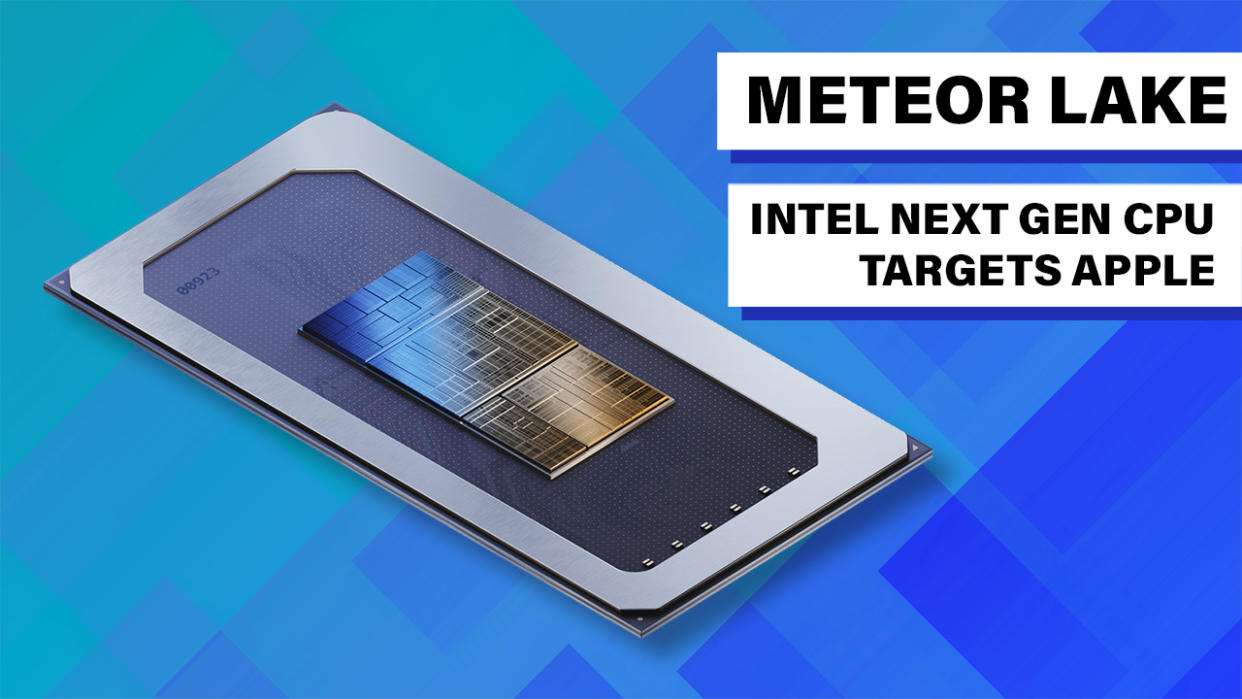
What you need to know
Intel is taking off the wraps on Meteor Lake, its next-gen power-efficient processors.
The company broke down its new architecture based on a "tile" design and disaggregated components.
New low-level E-cores, an NPU for AI, and a brand-new GPU based on Arc graphics.
Meteor Lake is built on an Intel 4 process node with Foveros 3D packaging.
The design and feature set for Meteor Lake began four years ago.
Intel has taken the wraps off its forthcoming next-gen Meteor Lake processors following its successful 12th (Alder Lake) and 13th Gen (Raptor Lake) processors with its new E- and P-core design. Its first chip built on the Intel 4 process node with Foveros 3D packaging, Intel calls Meteor Lake its "biggest architectural shift in 40 years" and that it will "lay the foundation for innovations for the PC," as noted by Tim Wilson, VP, Design and Engineering Group and GM, SoC Design at Intel.
Here's what you need to know about Meteor Lake and why it has the potential to be a massive game changer for the PC industry in 2024.
What is Meteor Lake?
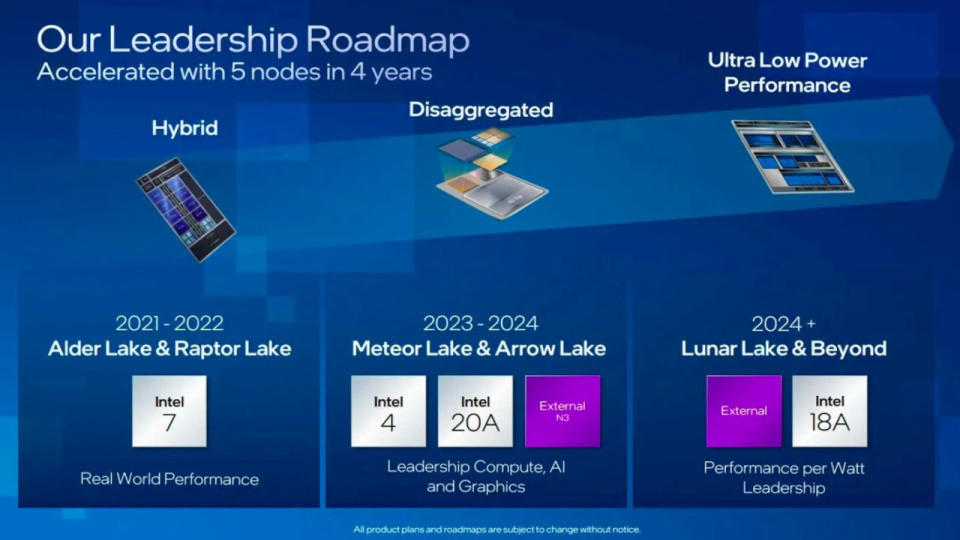
Meteor Lake is Intel’s next-gen CPU and the first built on the Intel 4 process, which is part of Intel’s long-term goal of “5 nodes in 4 years.” Previous generation naming would suggest it would be called Intel 14th Gen, but Intel is moving away from its older naming schema. Some reports have suggested Meteor Lake may reflect a reboot in generation numbers. Current rumors suggest Intel 14th Gen is simply a refresh of Raptor Lake, although Meteor Lake may play a part in that for laptops.
Meteor Lake processors are expected to ship in late 2023 or early 2024 in new laptops with thinner and lighter designs, better cooling, and much better battery life.
Interestingly, while Meteor Lake may finally start to match Apple on efficiency, the design and feature set for Meteor Lake began over four years ago before Apple's M-series existed. That means Meteor Lake isn't so much a reaction to Apple's M-series but was planned independently.
What makes Meteor Lake so different from 12th and 13th Gen processors?
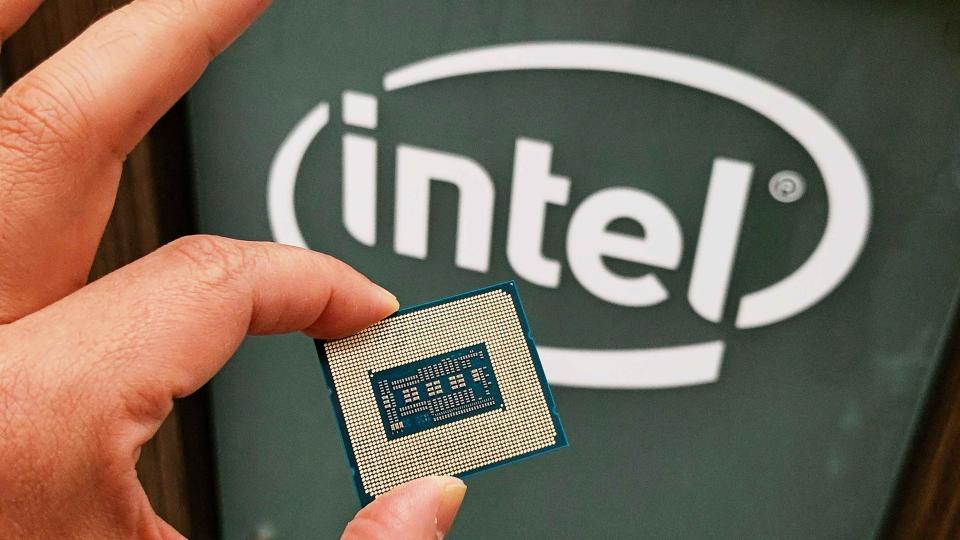
The significant change for Meteor Lake is what Intel calls disaggregation, which means the breaking down of core components into separate ‘tiles’ on the SoC. Meteor Lake features four Tiles, including:
Compute Tile: New E-core and P-core microarchitecture, built on Intel 4 process technology
SoC Tile: Low power island E-cores, NPU, Wi-Fi 6E/7, native HDMI 2.1 and 8K HDR AV1 support
Graphics Tile: Integrated Intel Arc architecture
IO Tile: Thunderbolt 4 (and presumably Thunderbolt 5) and PCIe Gen5
There’s a lot to unpack here.
First, separating core components (“disaggregating”) allows the SoC to turn off certain parts when not used. For instance, Media IP, including support for playing back video, previously was on the integrated GPU. However, Intel doesn’t need that much power for just video, so instead, it has moved to the main SoC Tile. This means when streaming or using local video file playback, the power-hungry integrated GPU “shuts off” since everything needed is found on the SoC Tile.
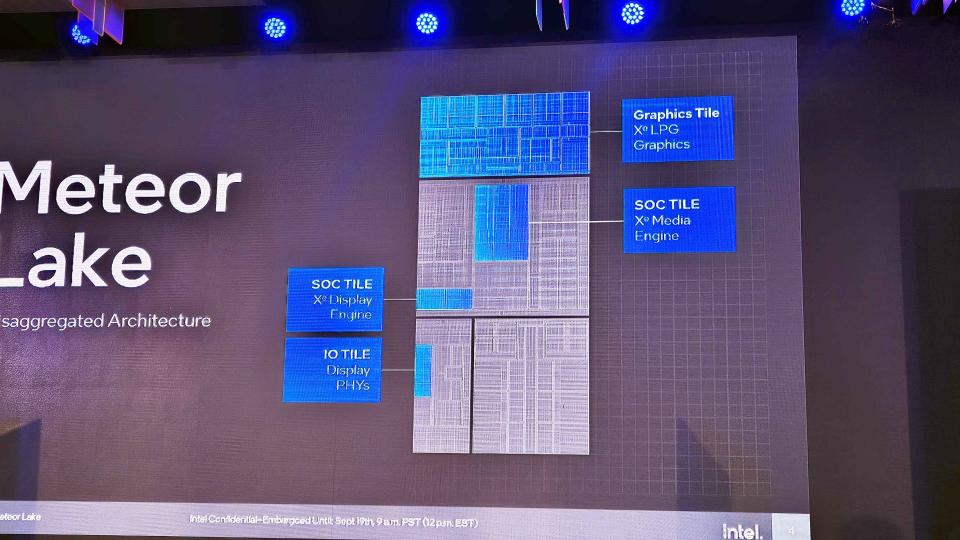
Next is the introduction of new low-power island E-cores. Intel Alder and Raptor Lake chips featured E-cores (“efficiency”) for lower power functions and P-cores (“performance”) for primary ones where more power is needed. Those cores, while improved in Meteor Lake, have been moved to the new Compute Tile. New and additional low-power island E-cores remain on the SoC Tile. These new E-cores draw even less power and offer a third level of performance, mainly for system background functionality in Windows. The updated Intel Thread Director, in combination with optimizations in Windows 11, lets the OS handle which cores get used for which tasks.

Think of it this way: When your PC is idling and not running any core tasks, these low-power E-cores take over, letting the P- and E-cores on the Compute Tile “turn off.”
Intel includes a discrete neural processing unit (NPU) on the SoC Tile. This chip offloads AI tasks like background blurring for webcams, on-the-fly noise removal for microphones, and even localized large language models (LLMs). This frees up all the P- and E-cores for everyday Windows tasks without degradation in performance. Moreover, Intel’s NPU draws much less power, which adds to the increased efficiency of Meteor Lake.
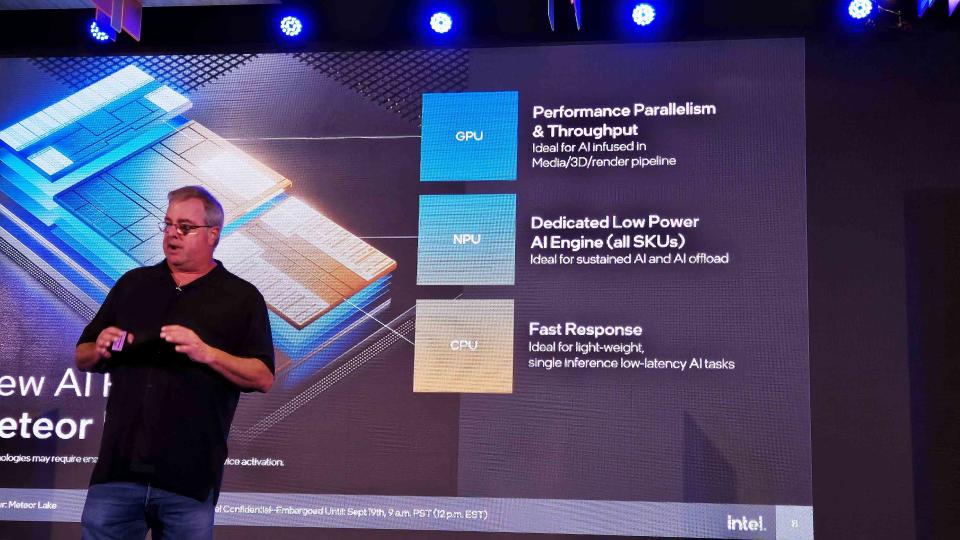
Including an NPU in every Meteor Lake chip is significant as it lets AI hardware scale to new levels. With developers creating and adding AI functionality to apps, this hardware feature helps drive the widespread adoption of AI and machine learning since it will be found in every new laptop that uses Meteor Lake.
The GPU is also getting a significant overhaul as Intel is porting its Arc GPU technology to Meteor Lake, delivering up to 2x the performance of Iris Xe found in 12th and 13th-generation CPUs. Because it’s built on Arc, driver compatibility is mainly taken care of, as Intel has created upwards of 30 drivers for Arc in the last year.
When all these tiles are combined and managed by the Intel Thread Director (and Windows 11), Intel has maintained (or exceeded performance) while sharply reducing power consumption since there are specialized pieces of the SoC for every task, and none require the other tiles to be powered to function.
How did Intel make this chip?
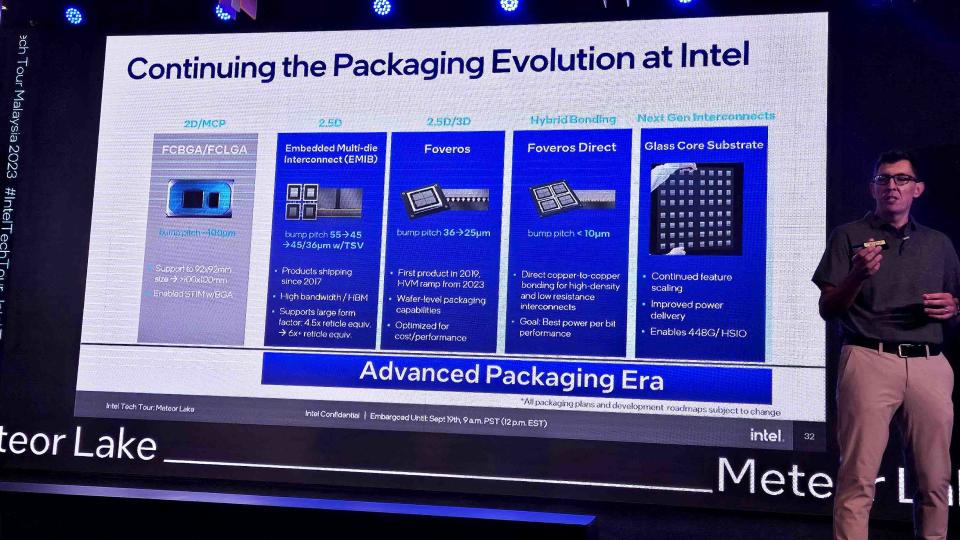
Intel uses its new Foveros advanced packaging technology, which uses “high density, high bandwidth, low power interconnects to enable large, disaggregated die complexes made up of individual tiles manufactured across multiple process nodes.”
Intel notes that compared to Raptor Lake, Meteor Lake Foveros packaging includes:
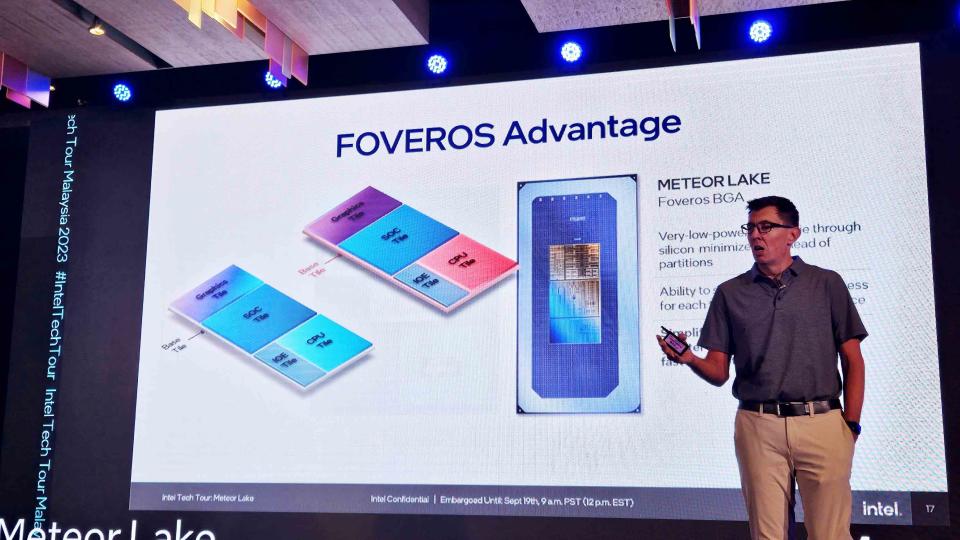
Lower-power die-to-die minimizes overhead of partitions.
Higher wafer yields from small tiles, as well as fewer wafer starts.
The ability to select the ideal Si process for each tile.
Simplified SKU creation for greater customizability.
Moving on from a System-on-a-chip (SoC) processor design, Foveros allows for more complex tasks when handled by dedicated tiles. With three of its tiles separated to manage graphics, SoC, and compute tasks, a Meteor Lake CPU is created with a five-step process that brings internally and externally sourced wafers into Intel's fabrication plants to be diced into individual chips. The triple-tiled setup still comes with manufacturing challenges, but Intel promises minimal performance impact from the new wafer-cutting process:
Singulation: Wafers are received and diced into individual chips.
Sort & diet test: Only dies passing inspection enter the Foveros assembly line.
Wafer assembly: Tiles are placed onto base wafers.
Package assembly: Complex assembly onto a ball grid array substrate.
Test and finish: Quality assurance with Intel's HDMx and several stress tests.
Will Meteor Lake finally have good graphics?
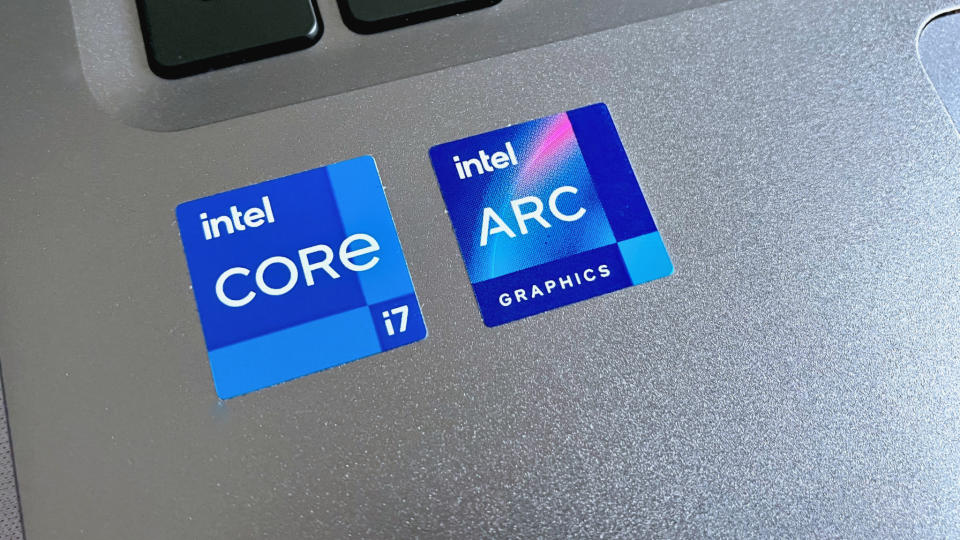
Yes. While GPUs like NVIDIA's RTX series are still significantly more powerful (and power-hungry), including Intel Arc graphics in Meteor Lake delivers much higher performance than we have seen previously. In a demo for the press in Malaysia (in August), Intel demoed Forza playing at full HD and steady 60 frames per second on this new laptop chip.
Promising twice the performance power when compared to the previous generation of mobile CPUs alongside double the performance per watt, the tremendous advancements made by the Intel Arc desktop graphics team can now be applied to Meteor Lake with its Xe-LPG graphics IP. While Arc GPUs are still relatively new, efforts to improve performance with regular driver updates have made Intel a genuine competitor in the graphics category against NVIDIA and AMD.
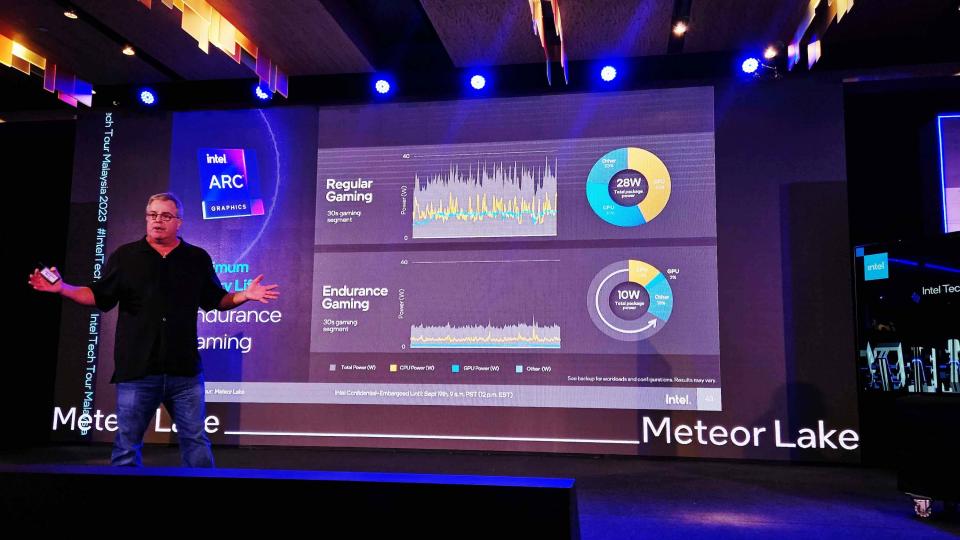
This should mean the end of low-scoring benchmarks that previous-gen Intel Iris Xe GPUs often struggled with. Splitting the new graphics hardware with a disaggregated architecture allows each engine to focus on specific tasks more efficiently, leaving the Xe Media and Xe Display Engine to handle encoding/decoding and multi-display output, respectively. Laptops with multiple physical displays, like last year's ASUS Zenbook Pro 14 Duo OLED, can harness the optimized Display Engine to power those less critical, like secondary touchscreens or a multi-function touchpad.
Leaving the Xe-LPG to handle real-time 3D rendering with support for DX12 Ultimate (DirectX) and modern enhancements, hardware-accelerated ray tracing for improved realism in lighting means genuine AAA gaming will finally be viable on an internal Intel GPU. Plus, carrying over benefits from the Intel Arc GPU range like Xe super sampling (XeSS) and variable rate shading means video games and creative software can render scenes at a lower native resolution and use the AI-based upscaling tech to provide a higher-fidelity image.
What does this mean for new laptops?
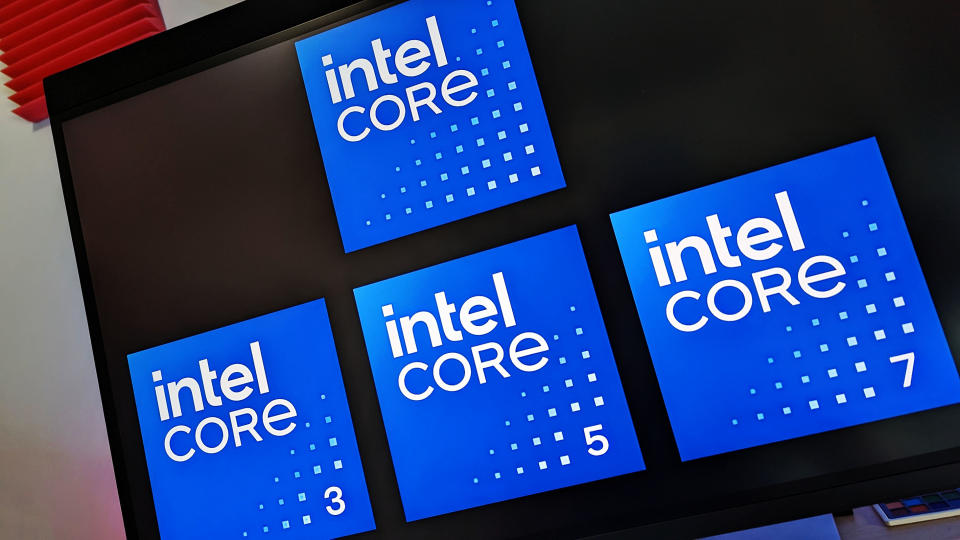
As with any generational leap for Intel, the focus for laptops is again on power efficiency, though it comes with many other benefits. Leaning on the updated Thread Director to efficiently manage new P-cores and E-cores means power management increases potential battery life. Automatically adjusting display refresh rates and brightness levels with Intel Intelligent Display, the next generation of laptops will use AI-powered hardware and software to push for more performance without sacrificing portability.
Intel's Dynamic Tuning Technology (DTT) will continue to enable OEMs to create custom power profiles for devices, promoting cooler and quieter operation modes at the touch of a button. It's a familiar-looking list of promised improvements to its predecessors, but Meteor Lake represents a significant step forward regarding sheer performance-per-watt. Eco-friendly power efficiency will go hand-in-hand with raw graphical performance gains, bringing laptops in line with real-time rendering capabilities on comparable desktop PCs.
Why are Intel's new laptop reference designs so important?
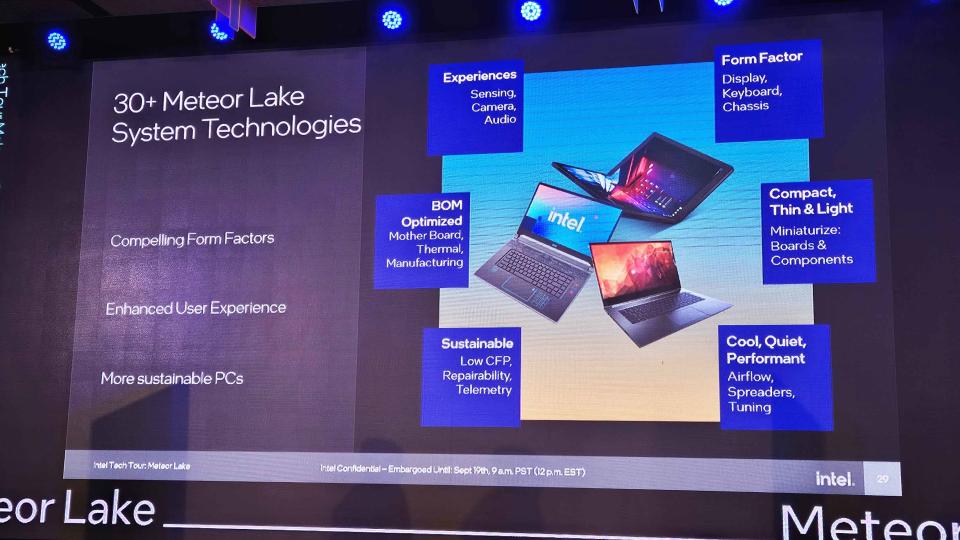
Besides making the chips for next-gen laptops, Intel is also heavily involved in assisting OEMs in making those laptops as efficient as possible. For a long time, the company has funded R&D into forward-looking computer designs, which is no different with Meteor Lake, except they are going further than before.
With Meteor Lake, Intel has created laptop reference designs for OEMs to license. Those designs include a new Dual Channel Flow Hybrid Hyperbaric flow architecture with dual outlet higher performance quiet fans. The new design lets Meteor Lake laptops run exceptionally quietly. Indeed, Intel claims that the fans sound like someone whispering from five feet away from you when at their max and should be below 30 dB. Additionally, Intel has patented a new Ultrathin Vapor Champer manufacturing process that “simplifies process steps resulting in lower cost” to manufacturers with up to 30% less iso-power.
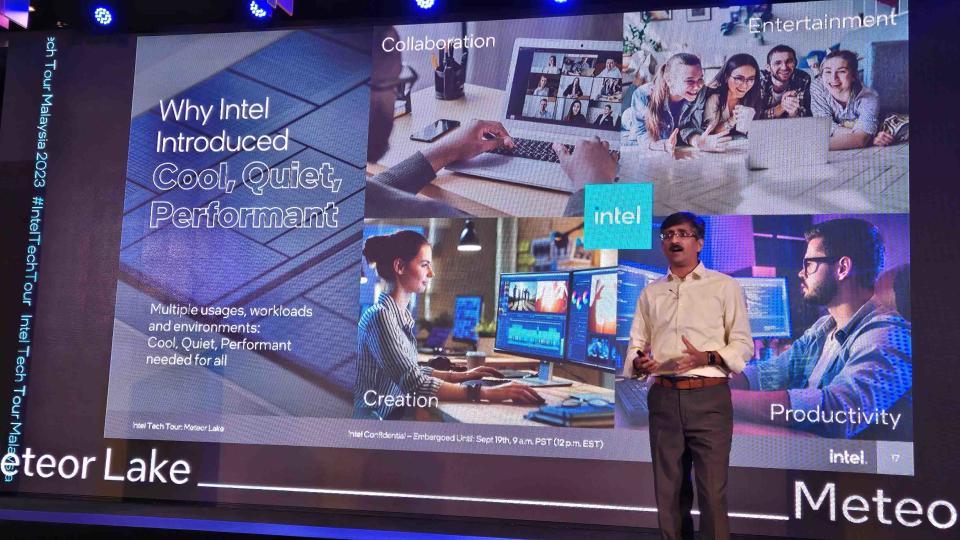
Intel also has references for microphones, web cameras, speakers, and a new modular motherboard design that lets companies repair and replace parts of the board instead of the whole thing, thereby reducing servicing costs.
While companies like HP, Dell, Lenovo, etc., do not have to license these designs from Intel, doing so saves them from investing in R&D to make the same thing effectively. Much like Intel’s Evo program, which sets standards for features and performance, these new reference designs set the bar for how a Meteor Lake laptop should function optimally.
What about specs, pricing, and release dates?
Today’s announcement by Intel focuses only on the new architecture and why it is such a significant shift in design. However, the company did not go into detail about specific processor SKUs like Core 3, Core 5, Core 7, etc., max turbo speeds, cache levels, pricing, or even release dates.
That said, Intel is expected to provide more information to answer all those questions in the coming weeks and months.
Intel's generational shift
With each generation of processors, Intel promises the usual string of improvements to performance and efficiency, as is the nature of creating the leading CPUs for desktop and mobile PCs. This time, however, the shift is so significant that it's undoubtedly related to a total reset of its naming system. Rather than simply becoming the predictable 15th Gen, Meteor Lake marks a significant milestone at the dawn of locally-processed AI with a dedicated NPU alongside an overhaul to integrated graphics with Intel Arc.
The future of Intel-based laptops wasn't exactly dim, but now it seems brighter than ever. Getting hands-on with devices built with Meteor Lake processors will surely make for an exciting set of real-world comparisons against the 12th and 13th Gen from the past few years and hopefully strengthen Intel's position in the desktop GPU market thanks to the rising success of Arc graphics cards. There were more avenues of discussion than just Meteor Lake during the conference, and we'll soon dig into the specifics of those, too.
The big question, of course, is how Intel's Meteor Lake compares to Qualcomm's forthcoming Oryon (ARM) processors (made by the team who designed Apple's processors), where AMD goes with Ryzen, and how Intel's efficiency efforts compare to Apple's new M3 series of CPUs. The good news is that processor competition has never looked so good, meaning consumers will be the big winners in 2024.
